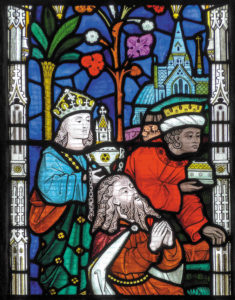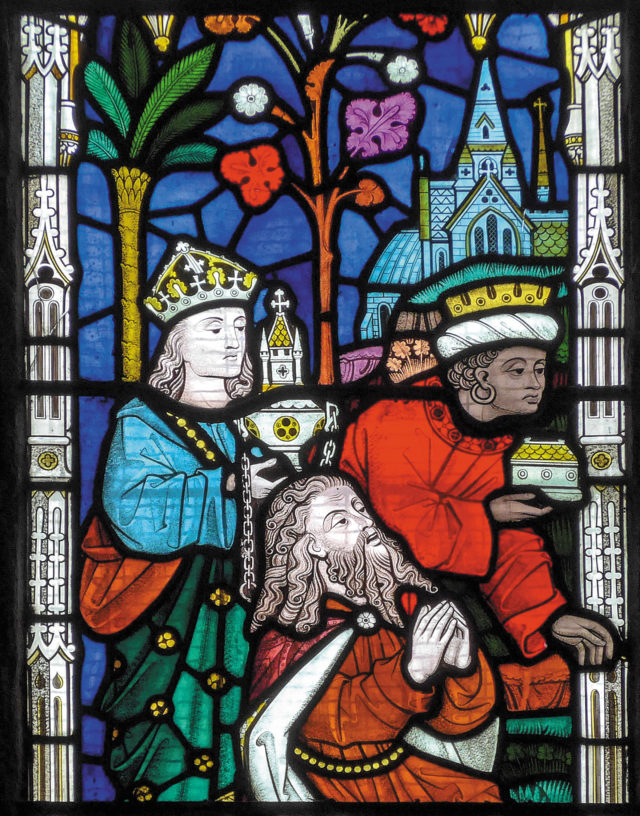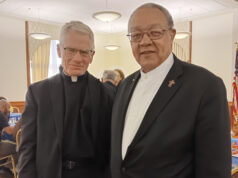For The Dialog
Father Stanislao Esposito didn’t anxiously await Christmas morning to see what Santa had left him while growing up in Italy. Instead, he awaited a Jan. 6 visit by La Befana, a good witch, who brought gifts for boys and girls.
“The idea was that since Jesus got his gifts on the Epiphany, so did we,” said the pastor of St. Mary Star of the Sea-Holy Savior in Ocean City, Md.
The Feast of the Epiphany celebrates the arrival of the three magi — often called wise men or kings — with gifts of gold, frankincense and myrrh for the Christ child. La Befana (and a similar Russian tradition called Babushka) is one of many traditions around the world that mark that occasion. Jan. 6 — the twelfth day of Christmas — is the traditional feast day for the Epiphany, but it will be observed on Sunday, Jan. 7, in the United States.

Among the traditions are pastries or breads used in many countries, including parts of the United States, that help tell the Nativity story. For example, in Mexico, and many other Spanish-speaking countries, the feast is celebrated with a cake called Rosca de Reyes, roughly translated “ring of the kings,” and is a traditional day for gift-giving. In New Orleans, the King Cake not only ends the Christmas season but begins the Carnival season, which ends with Mardi Gras.
All help tell the Nativity story.
The King Cake and Rosca de Reyes are both round cakes that resemble a crown, harking back to the image of the wise men as kings who came to pay homage to the newborn Christ child. They often have a small baby doll, or other token, to represent Jesus, which some believe represents the flight of the Holy Family to Egypt to conceal Jesus from King Herod’s troops. The traditions began in southwestern Europe, in France, Spain, and Portugal (where it is called “bolo rei”).
La Befana, according to some, was a good witch who was visited by the wise men on their way to Bethlehem. They told her of the bright star they were following and of a newborn king, and invited her to accompany them. She refused, saying she was too busy.
Later, seeing the star, she felt she needed to go as well, gathered some gifts for the baby, and began after the wise men. But she never caught up to them and never found the baby Jesus. The legend holds that she brings gifts to children today in hopes of finding the Christ child.
Father Esposito knows of background stories of La Befana, but prefers to focus on the main point of Epiphany gift-giving.
“The whole point has always been the same: We got gifts from Baby Jesus through the Befana. The connection between the magi and the gifts received was THE connection to the story of Jesus and the Christmas season.”
Annemarie Conestabile, a parishioner at St. Mary Star of the Sea, who spent most of her childhood in Italy before coming to the United States, recalled La Befana’s visits.
“Most families have a family member who will dress up as the Befana and purposely cross the path of a sleepy child, so they can joyfully shout that they saw the good old lady,” she said. “I have fond memories of my father sneaking into the house dressed as the Befana, and he continued this wonderful tradition later on in life when he was a grandfather.”
Children receive “a humble gift” — candy, and “one special thing the child loves,” she said.
“The joy of receiving is multiplied by the joy of the poor old witch’s act of giving. Children are taught that giving is Christ-like.”
Father Esposito said Christmas when he was a child in Italy “was solely focused on the ‘presepe,’ the nativity scene, which took up almost a full room.”
Gift-giving waited until the Epiphany, when La Befana left gifts around one’s bed, not arranged around a Christmas tree. Children also received a “‘calza,” a long sock filled with candies and other goodies, much like Christmas stockings. Children who were not quite so good received “coal,” a sugary confection.
The tradition continued into adulthood, when family members would sneak toward each other’s beds to leave gifts.
“To this day, people exchange calza on the Epiphany,” Father Esposito said. “Unfortunately, with the arrival of Babbo Natale — Father Christmas, or as he is known here, Santa — the gift-giving has been transferred to Christmas, but many still have something on Jan. 6.”
The major difference he sees between gift-giving in the United States and when he grew up in Italy, besides the date, is the religious significance.
“Here, gift-giving/receiving through Santa is disconnected, independent of the Christmas story,” the birth of Christ.







